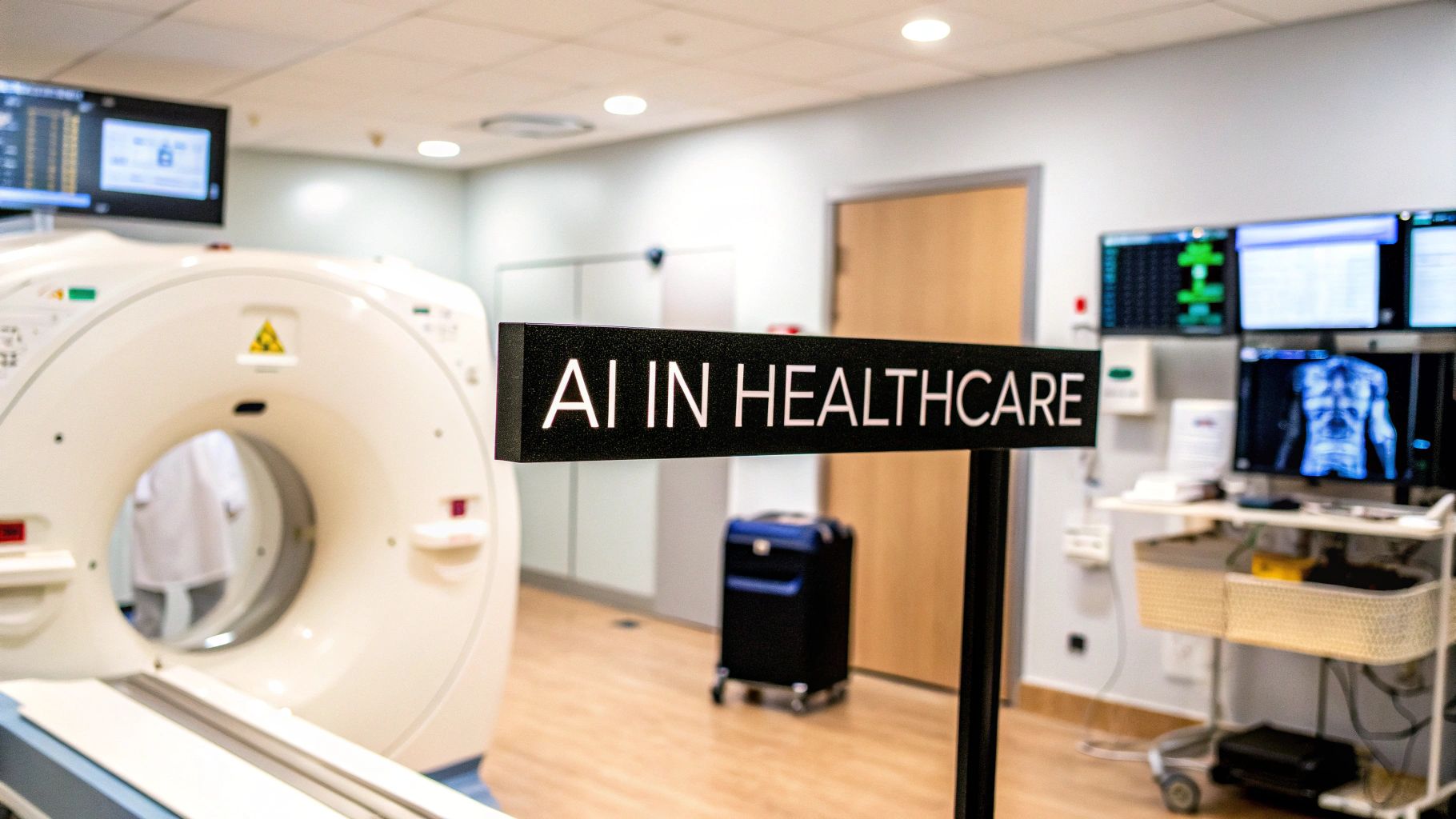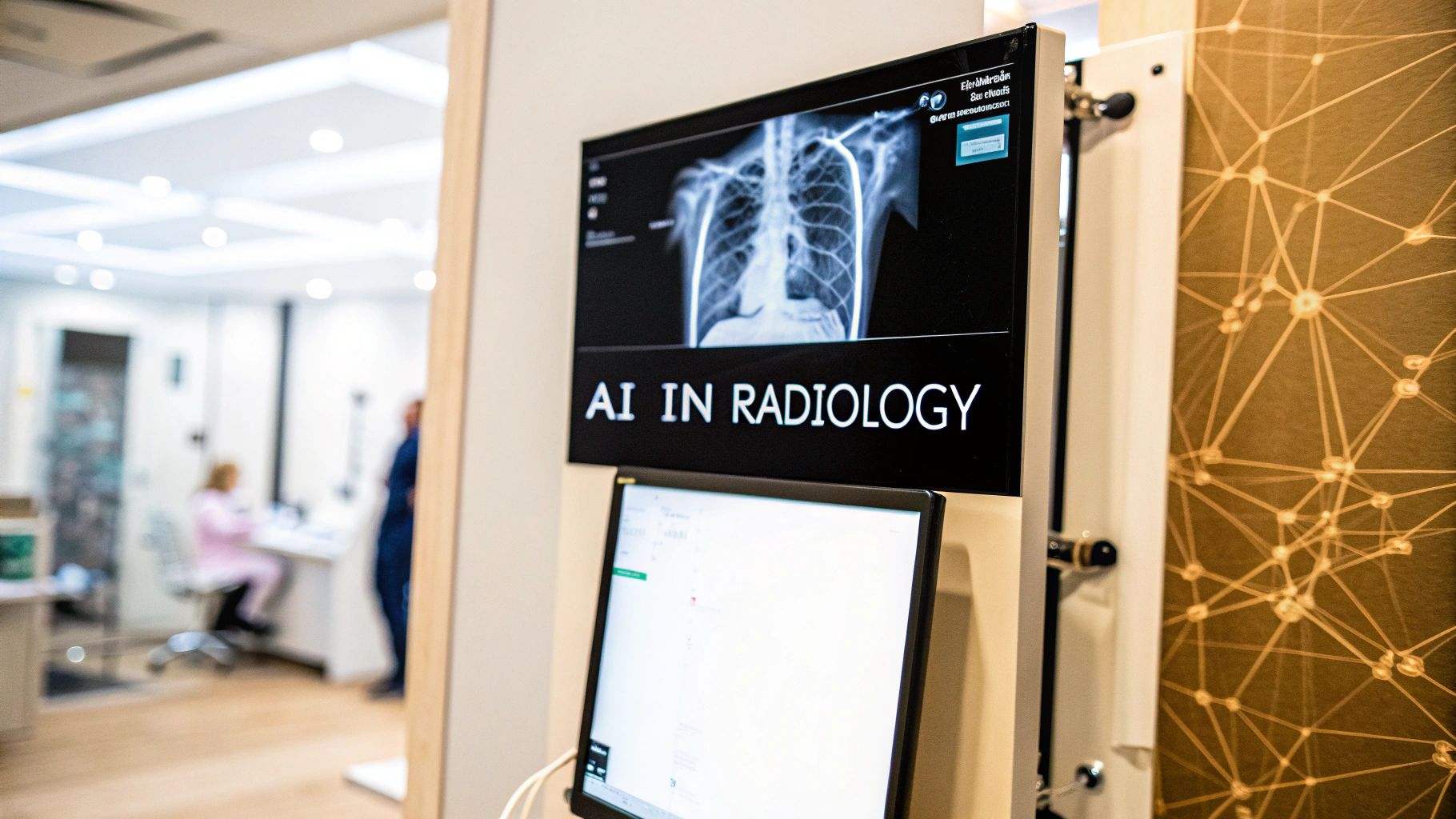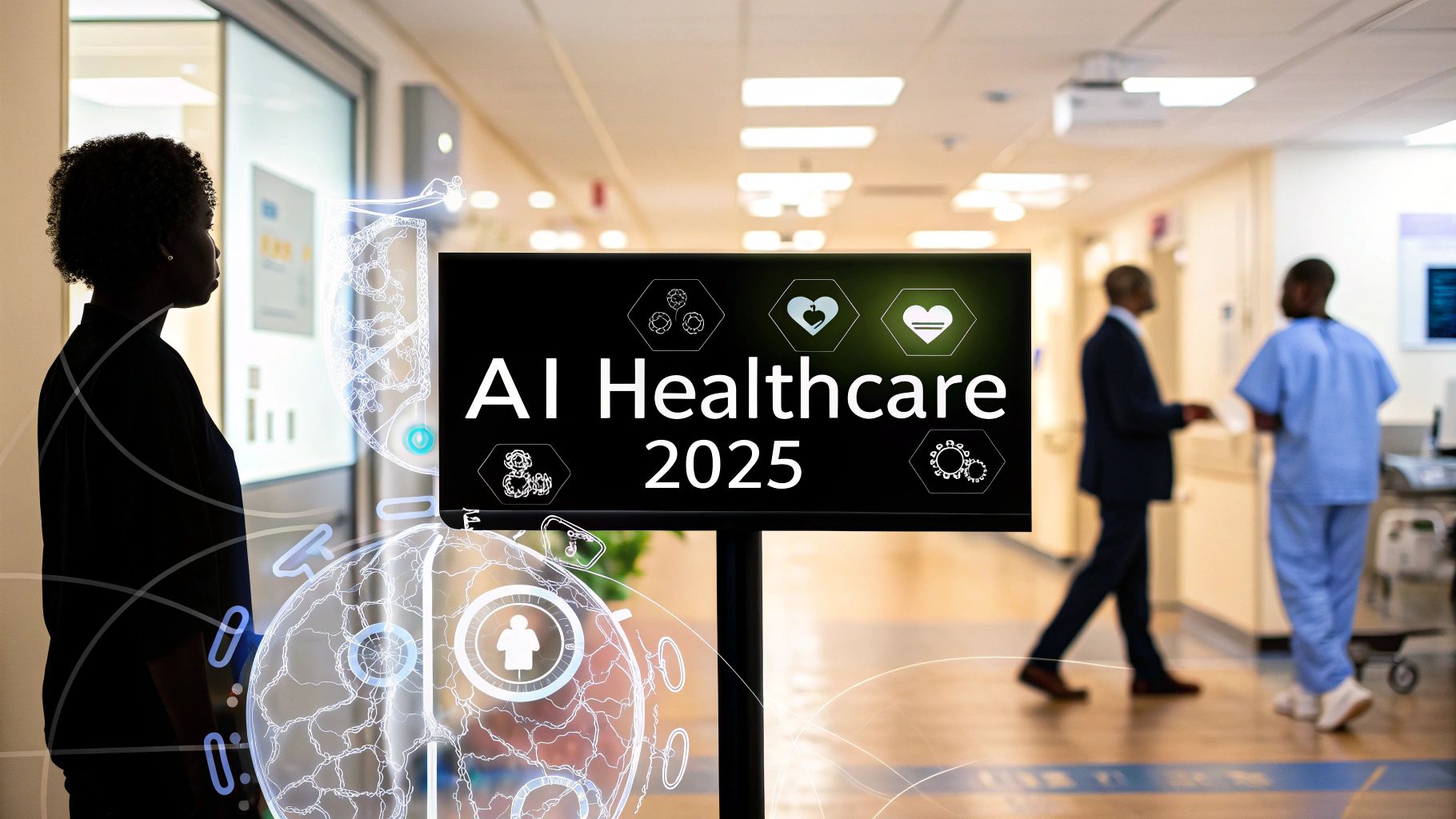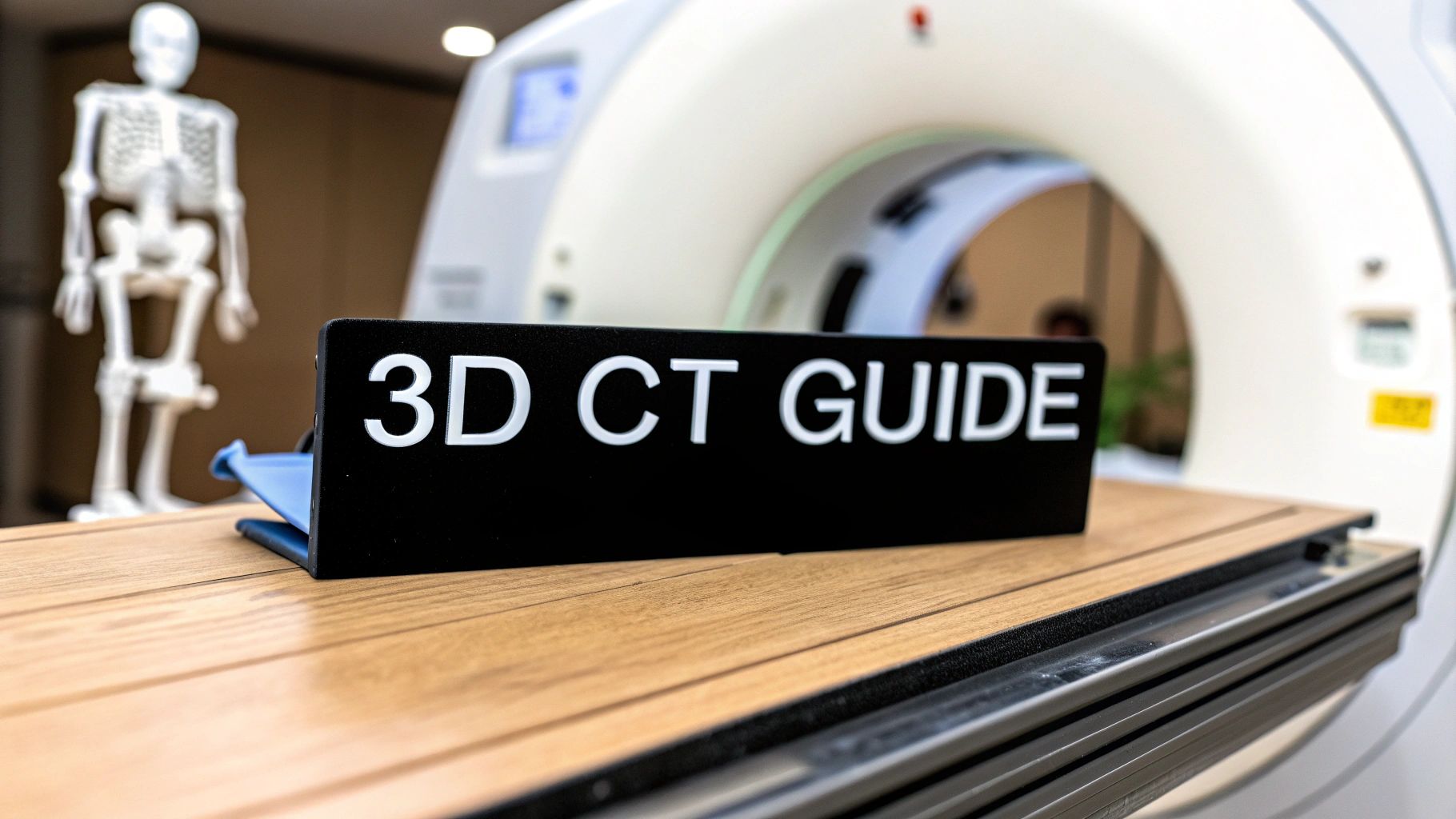The Critical Foundation of Medical Device Software Validation
Medical device software validation is essential for patient safety and a company's reputation. It confirms that software consistently meets its intended use and specified requirements, protecting patients from potential harm. This involves a proactive strategy that prioritizes quality throughout the software development lifecycle, integrating validation from the initial design stages.
Verification vs. Validation: Two Sides of the Same Coin
Understanding the difference between verification and validation is crucial. Verification checks if the software adheres to internal specifications and design documents, asking, "Are we building the product right?" Validation ensures the software fulfills its intended purpose and meets user needs, asking, "Are we building the right product?"
For example, verifying a blood glucose monitor's software might involve checking the data display. Validating the same software would involve ensuring accurate blood glucose measurements within acceptable clinical limits.
The Real-World Impact of Validation Failures
Inadequate medical device software validation can have severe consequences, including product recalls, patient injury, and reputational damage. Regulatory bodies can also impose significant penalties for non-compliance. In 2025, the market strongly emphasizes reliable and safe medical device software that meets its intended use. Software validation failures can lead to recalls, adverse health outcomes, and regulatory penalties, highlighting its importance for compliance and patient safety. Find more detailed statistics here
Communicating the Value of Validation
While some view validation as a cost center, effective communication can highlight its strategic importance as an investment in patient safety and risk mitigation. Presenting data on reduced recall rates, minimized liability, and enhanced brand trust as key benefits of a comprehensive validation program demonstrates its value. For instance, showing how robust validation has prevented safety incidents and legal costs underscores its importance in responsible medical device development.
Navigating The Regulatory Maze: Global Requirements Decoded
Medical device software validation is essential for ensuring patient safety and achieving market access. However, requirements vary significantly across the globe. Understanding these nuances is crucial for manufacturers seeking international distribution. This means aligning your validation program with the specific demands of each target region. A practical interpretation of these regulations, focusing on core compliance, is key.
Regional Variations In Validation
Different regions have distinct regulatory bodies and standards. The U.S. Food and Drug Administration (FDA), for example, emphasizes premarket approval and comprehensive documentation. The European Union Medical Device Regulation (EU MDR) prioritizes clinical evaluation and post-market surveillance. Other regions, like Japan and China, have their own unique sets of rules. Understanding these differences is the first step in creating a globally compliant validation strategy.

This infographic depicts a risk planning session, highlighting the importance of careful risk assessment in medical device software validation. It underscores the proactive approach necessary to navigate complex regulatory requirements, ensuring compliance while fostering innovation.
To help illustrate the differences in global regulatory requirements, the following table provides a comparison:
Global Regulatory Requirements Comparison: Comparison of key validation requirements across major regulatory frameworks for medical device software
| Regulatory Body/Standard | Region | Key Requirements | Documentation Needed | Validation Frequency |
|---|---|---|---|---|
| FDA 21 CFR Part 820 | United States | Premarket approval, Design Control | Design history file, Risk management file, Validation reports | Throughout product lifecycle |
| EU MDR 2017/745 | Europe | Clinical evaluation, Post-market surveillance | Technical documentation, Clinical evaluation report, Post-market surveillance plan | Throughout product lifecycle |
| Japanese MHLW Ordinance 169 | Japan | Premarket approval, Quality management system | Design documents, Manufacturing process documents, Test reports | Throughout product lifecycle |
| Chinese NMPA Order 650 | China | Clinical trials, Registration | Clinical trial data, Product registration documents | Throughout product lifecycle |
Key takeaway: While all regions require robust documentation and lifecycle validation, the specific focus and processes differ. Manufacturers need to tailor their approach to each target market.
Class-Specific Requirements
The level of scrutiny also depends on the device's risk classification. Class III devices, which pose the highest risk to patients, undergo the most stringent validation processes. Class II devices require a moderate level of validation, while Class I devices, posing the lowest risk, have less stringent requirements. This risk-based approach ensures that validation efforts are proportionate to the potential harm.
Documentation Best Practices
Effective documentation is fundamental. Regulators expect clear, concise, and complete records. This documentation should include everything from user needs and design specifications to test plans, results, and validation reports. Proper documentation not only satisfies regulatory requirements but also facilitates internal communication and knowledge transfer.
Market Growth And Trends
The global market for medical device validation and verification is experiencing substantial growth. It's projected to increase from USD 1.04 billion in 2023 to USD 1.13 billion in 2024, at a CAGR of 8.8% from 2025 to 2030. This expansion is driven by increasing regulatory demands and rapid technological advancements. For more information on this trend, see this report from Grand View Research.
Enforcement Trends: Staying Ahead Of The Curve
Regulatory bodies are constantly refining their focus. Staying informed about enforcement trends is crucial. For example, regulators are increasingly scrutinizing software security, especially for connected devices, including data privacy and protection against cyberattacks. By staying informed, manufacturers can proactively address potential vulnerabilities and avoid regulatory issues. This proactive stance is essential for maintaining compliance and building a robust validation program.
Crafting Validation Plans That Actually Work
Stop creating validation plans that simply gather dust. Instead, let's explore how to develop medical device software validation strategies that satisfy regulators and are practical for your team. This involves learning from real-world examples of medical device companies, both large and small. This section will guide you in creating effective and efficient validation plans.
Scoping Validation Activities: A Risk-Based Approach
Successful manufacturers tie their validation activities directly to the risk level of their device, avoiding unnecessary complexity or inadequate testing. For a Class III implantable device, extensive testing and documentation are essential. However, a Class I external device might require a less intensive approach. Understanding this balance is key to efficient resource allocation.
Defining Meaningful Acceptance Criteria
Effective validation relies on well-defined acceptance criteria. These criteria must genuinely evaluate software performance against its intended use. For instance, if a software component controls drug delivery, the acceptance criteria must ensure precise dosage within tight tolerances. This precision protects patient safety and demonstrates regulatory compliance.
Resource Allocation: Preventing Bottlenecks
Proper resource allocation prevents validation bottlenecks. This involves assigning skilled personnel, providing adequate tools and equipment, and establishing realistic timelines. For example, dedicating experienced testers to complex software modules ensures thorough evaluation and prevents delays. This proactive planning streamlines the entire validation process.
Documentation Strategies: Demonstrating Compliance
Navigating global requirements often involves using software tools; for instance, to find the right regulatory compliance solutions for medical devices. Documentation is crucial but shouldn’t be overwhelming. Focus on creating clear, traceable records that link user needs to validation evidence. Employ tools and templates to streamline documentation and avoid unnecessary paperwork. This approach satisfies inspectors without burying your team in documents. This efficient documentation ensures compliance while maximizing team productivity.
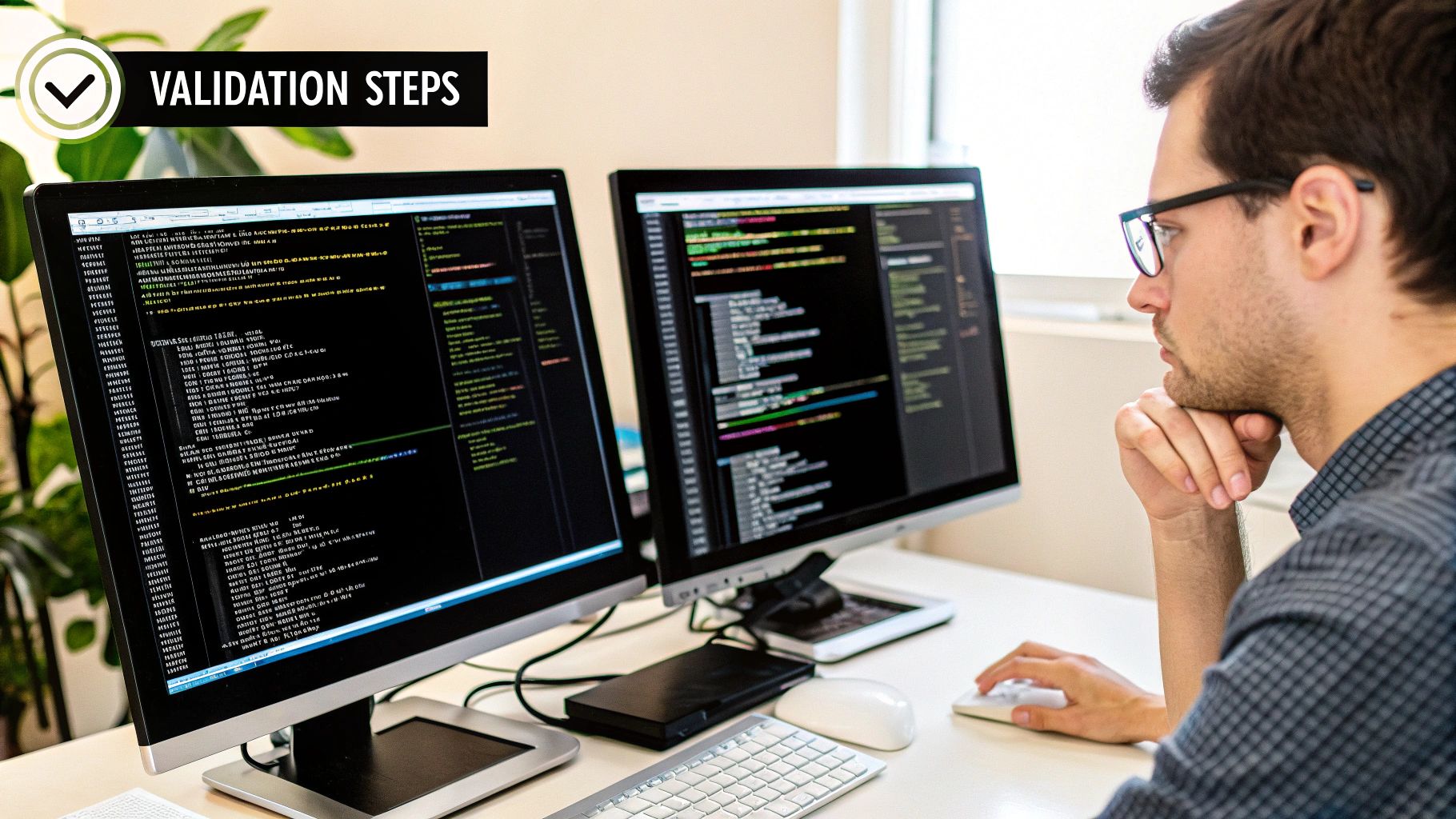
Practical Templates and Frameworks
Adaptable templates and frameworks simplify validation planning. These resources provide a structure for defining scope, identifying risks, establishing acceptance criteria, and documenting results. They also ensure consistency across projects, reducing the need to reinvent the wheel for each validation effort. This efficiency allows your team to focus on the core validation tasks.
By adopting these practical strategies, you can create validation plans that are not only compliant but also contribute to the overall quality and success of your medical device software. This proactive approach ensures patient safety and strengthens your company's reputation for producing reliable medical technology.
Validation Testing Methodologies That Deliver Results
Ensuring the safety and efficacy of medical device software is paramount. This involves rigorous testing to identify and address potential issues before they impact patients. Let's explore some practical validation testing methodologies used by leading medical device manufacturers. These strategies help identify software problems early, preventing regulatory issues and ensuring patient well-being. This proactive approach involves a strategic blend of automated and manual testing techniques tailored to the specific risks of each device.
Balancing Automated and Manual Testing
Effective software validation requires a balanced approach. Leading validation teams understand the strengths of both automated and manual testing and use them strategically. Automated testing excels at repetitive tasks like regression testing, efficiently verifying that new code doesn't introduce unintended consequences to existing functions. This automated efficiency frees up valuable resources for other critical validation activities.
Manual testing, however, remains indispensable for exploring edge cases and simulating real-world usage scenarios. In these situations, human intuition and judgment are essential. The key lies in finding the right balance between automation and manual testing based on the specific requirements of your device.
Creating Robust Test Cases
Well-designed test cases are the cornerstone of effective software validation. These test cases should thoroughly challenge the software's limits, exploring not only intended usage but also potential misuse and unexpected scenarios. For instance, a test case for an insulin pump might simulate a dropped device or a sudden power interruption to verify its safe response. These comprehensive tests are crucial for confirming the software's robustness under a wide range of conditions.
Risk-Based Testing: Focusing Resources Where It Matters Most
A risk-based approach to testing prioritizes efforts based on the potential impact on patient safety. High-risk functionalities, those directly impacting a patient's well-being, receive the most rigorous testing. Lower-risk functions, while still tested, undergo less intensive scrutiny. This risk-based strategy optimizes resource allocation, ensuring that critical areas receive the appropriate level of attention.
Validation Across Different Device Types
Validation methodologies must adapt to the specific technology of the device. Embedded software, cloud-connected devices, and Software as a Medical Device (SaMD) each present unique validation challenges. Embedded systems require thorough testing of the complex interactions between hardware and software. Cloud-based systems demand robust security testing and validation of data integrity to protect sensitive patient information. SaMD validation focuses on algorithm accuracy and overall clinical performance.
Validating AI and Machine Learning Components
The increasing integration of artificial intelligence (AI) and machine learning (ML) into medical devices introduces new complexities to validation. These adaptive systems learn and evolve, making traditional testing methods less effective. New validation techniques, such as adversarial testing and explainable AI (XAI), are emerging to address these challenges. Regulatory bodies are closely scrutinizing AI/ML in medical devices, underscoring the need for robust validation strategies.
To illustrate the different validation methodologies and their applicability, the following table summarizes key information:
The table below, "Validation Testing Methods Comparison," compares different validation testing methodologies, highlighting their strengths, weaknesses, and appropriate use cases. Understanding these differences is crucial for selecting the most appropriate method for each validation activity.
| Testing Method | Best Used For | Resource Requirements | Effectiveness | Limitations |
|---|---|---|---|---|
| Unit Testing | Individual software components | Low | Highly effective for isolating bugs | Doesn't test system-level interactions |
| Integration Testing | Interactions between software modules | Moderate | Effective for identifying interface issues | Can miss complex system-level bugs |
| System Testing | Complete, integrated system | High | Tests the entire system as a whole | Can be time-consuming and expensive |
| User Acceptance Testing | Simulating real-world use | Moderate | Ensures software meets user needs | May not cover all edge cases |
| Regression Testing | Ensuring new code doesn't break existing functionality | Low to Moderate (depending on automation) | Essential for maintaining software stability | Requires well-defined test suites |
Key takeaways from this comparison include the importance of selecting the appropriate testing method based on the specific stage of development and the level of risk associated with the software component.
By adopting these practical testing methodologies and tailoring them to your device's specific technology and risk profile, you can ensure robust medical device software validation and achieve regulatory compliance. This proactive approach minimizes risks, fosters innovation, and reinforces your company's dedication to patient safety. Integrating these methodologies strategically provides a comprehensive approach to software validation, paving the way for the development and deployment of safe and effective medical devices.
Documentation Mastery: From Requirement to Validation Report
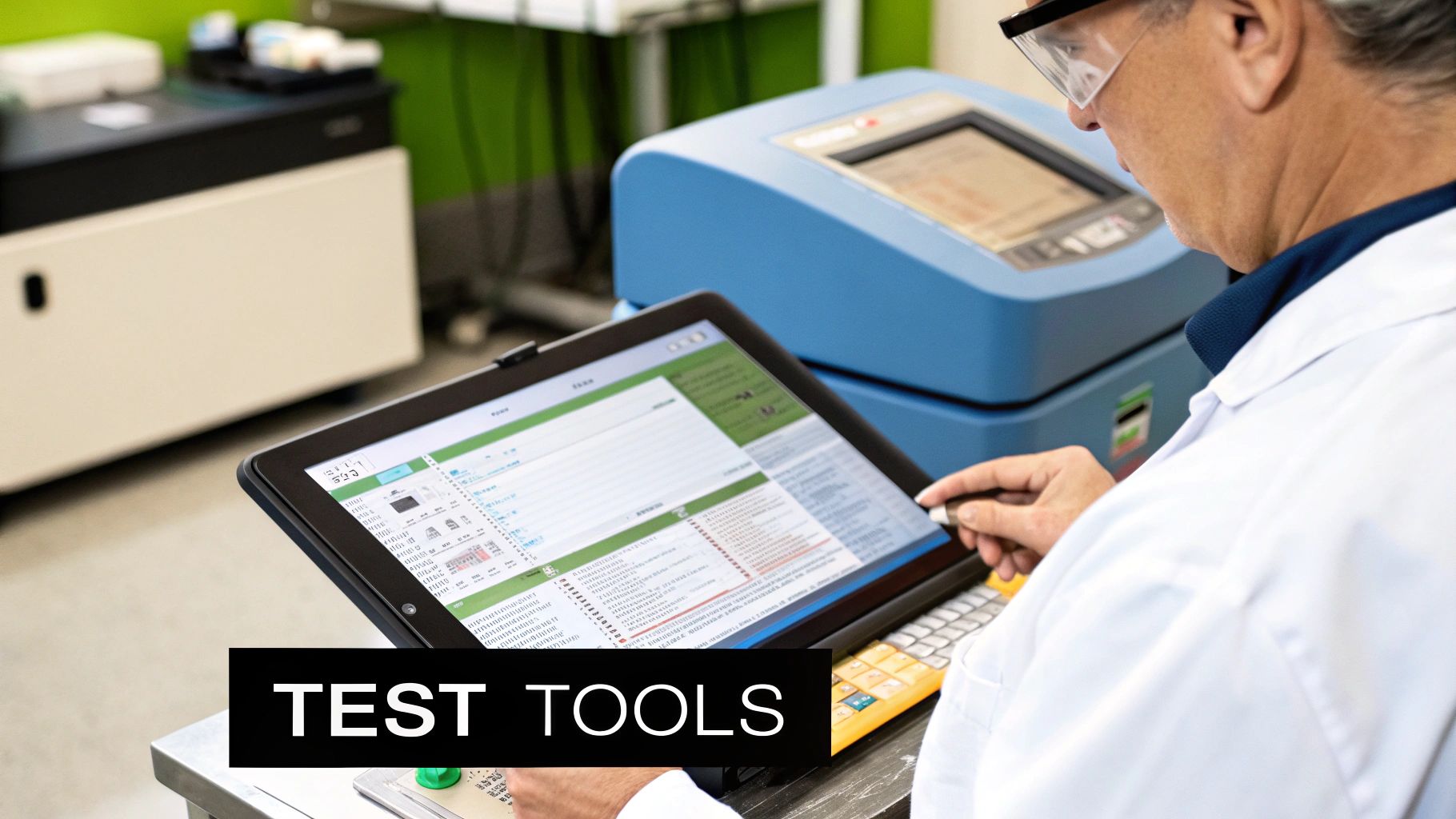
Thorough documentation is essential for medical device software validation. It's not just a regulatory checkbox, but the foundation of a defensible process. This documentation provides a clear audit trail, showing how your software meets its intended use and complies with regulations. This section explains how to create documentation that satisfies regulatory bodies while remaining manageable for your development team. Robust documentation is key for demonstrating compliance. For further guidance on building a strong documentation foundation, see this resource on Software Quality Assurance Best Practices.
Traceability: Connecting the Dots
Traceability is a critical aspect of validation documentation. It involves demonstrating a clear link between user needs, design specifications, test cases, and validation results. A traceability matrix is an invaluable tool for this. It maps each requirement to the specific tests verifying its implementation, ensuring that all requirements are addressed and validated.
Documentation Practices for Efficient Audits
Regulatory audits are an integral part of the medical device lifecycle. Well-organized documentation significantly simplifies this process. Clear document version control, consistent formatting, and easily searchable records can drastically reduce audit time and effort. Moreover, well-maintained documentation facilitates internal reviews and knowledge transfer within the development team. This streamlined approach makes information readily accessible and understandable.
Handling Changes: Adapting Without Starting Over
Software development is iterative, and changes are inevitable. Your documentation needs to be adaptable to accommodate these changes without requiring a complete rewrite. Version control systems like Git and change management procedures are essential for this. They track modifications, maintain a revision history, and ensure all documentation stays current and accurate throughout the software’s lifecycle.
Leveraging Modern Tools for Streamlined Documentation
Leading manufacturers are using modern tools to streamline their documentation processes. These tools can automate document generation, manage version control, and facilitate team collaboration. Some tools integrate with testing platforms like TestRail, automatically linking test results to requirements. This automation reduces manual effort and minimizes the risk of errors, allowing your team to focus on core validation activities.
Common Documentation Pitfalls to Avoid
Even with significant validation effort, documentation pitfalls can lead to regulatory findings. These include incomplete records, inconsistencies between documents, and a lack of clear traceability. For instance, if test results aren't clearly linked to specific requirements, regulators may question the thoroughness of your validation. Another common issue is insufficient documentation of changes made during development. These oversights can undermine your validation efforts, highlighting the importance of meticulous documentation throughout the entire process.
By following these documentation practices, you can create a robust and defensible record of your medical device software validation process. This not only ensures regulatory compliance but also contributes to the overall quality and reliability of your software, ultimately benefiting patient safety. This proactive approach to documentation builds a solid foundation for success in the medical device industry.
Global Trends Reshaping Medical Device Software Validation
The medical device software validation landscape is in constant flux. Manufacturers must adapt their validation strategies to stay compliant and competitive. This section explores key global trends transforming validation requirements and practices, including AI integration, increased connectivity, and the growing importance of cybersecurity. Understanding these shifts is crucial for a successful long-term validation strategy.
The Rise of AI and Machine Learning
The growing use of artificial intelligence (AI) and machine learning (ML) in medical devices presents opportunities and challenges for validation. AI offers the potential to improve diagnostic accuracy and personalize treatment. However, its adaptive nature makes it difficult to validate using traditional methods.
New validation approaches are becoming essential, such as adversarial testing and explainable AI (XAI). These techniques help ensure the safety and reliability of AI-powered medical devices.
Connectivity and the Cloud
Increasingly, medical devices are connecting to the cloud, facilitating remote monitoring, data analysis, and software updates. This connectivity, however, also expands the potential for cybersecurity threats.
Consequently, medical device software validation must now encompass data security, privacy, and protection against unauthorized access. Robust security testing and data integrity validation must be incorporated into validation plans.
Cybersecurity: A Growing Imperative
With increasing connectivity, cybersecurity has shifted from a secondary concern to a core requirement. Regulators are focusing more on software security vulnerabilities, especially for devices handling sensitive patient data.
Medical device software validation must prioritize security testing, vulnerability assessments, and penetration testing to mitigate these risks. Addressing cybersecurity threats is now paramount for both regulatory compliance and patient safety.
Regional Variations in Validation Practices
Validation practices vary across major markets. The United States, for example, emphasizes premarket approval, while Europe focuses on post-market surveillance. The Asia-Pacific region is experiencing rapid growth in medical device development and validation.
Navigating these regional differences requires a nuanced understanding of local regulations and standards. This is essential for developing a global validation strategy.
Market Growth and Investment
The validation and verification market is poised for significant growth. Forecasts predict a rise from USD 1.04 billion in 2023 to USD 1.98 billion by 2031, with a CAGR of 11.41% between 2022 and 2031. This growth is driven by factors such as expanding healthcare infrastructure, increased investment in medical technology, and the recognition of validation's critical role in device safety and efficacy. The Asia-Pacific region is a major contributor to this expansion. Learn more here.
Preparing for Future Regulatory Shifts
Forward-thinking manufacturers are proactively preparing for evolving regulations. They are investing in advanced validation tools, training teams on new methodologies, and establishing flexible validation processes that can adapt to change. This proactive approach positions them for success in the dynamic medical device market. It is crucial for maintaining compliance and ensuring patient safety. By understanding and adapting to these global trends, medical device manufacturers can develop robust validation programs that address current and future challenges, strengthening compliance, enhancing patient safety, and supporting medical technology advancements.
Implementing Continuous Validation: Beyond the One-and-Done
The traditional "validate once before launch" approach to medical device software is simply not enough anymore. Modern medical devices are increasingly complex and interconnected, demanding a more dynamic validation strategy. This means moving away from a single validation event to continuous validation, an ongoing process of assessment and improvement throughout the software lifecycle. This helps ensure high software quality and faster time-to-market.
Automated Testing Frameworks: Supporting Frequent Iterations
Regular software updates are essential for adding new features, improving performance, and addressing security vulnerabilities. Each update, however, requires validation. Automated testing frameworks like Selenium are essential for managing this effectively. These frameworks allow for efficient and repeatable testing of software modules, which in turn enables rapid validation of frequent iterations.
For example, automated tests can verify that core functions remain intact after each code change, thus minimizing the need for manual testing and accelerating release cycles. This efficiency is crucial for staying competitive in the fast-paced medical device market.
Revalidation: Knowing When It’s Necessary
Not every software change requires a full revalidation. Understanding when revalidation is truly necessary, as opposed to when it's excessive, is vital for efficient resource management. Changes to high-risk functionalities, those directly impacting patient safety or core device performance, typically require a comprehensive revalidation. However, minor updates, such as user interface enhancements, may only require limited retesting of the affected modules. This risk-based approach to revalidation helps optimize resource allocation, avoiding unnecessary delays and costs.
Documentation for Continuous Validation: Meeting Regulatory Demands
Documenting continuous validation comes with unique challenges. Traditional documentation methods often struggle to keep up with frequent updates. Strategies like automated document generation, Git for version control, and continuous integration/continuous delivery (CI/CD) pipelines can help maintain accurate and traceable records throughout the software development lifecycle. This streamlined approach ensures regulatory compliance while reducing the workload on development teams.
Leveraging Post-Market Data: Refining Validation Strategies
Post-market surveillance provides invaluable data for refining validation strategies. Analyzing real-world device usage patterns, performance data, and user feedback can reveal areas for improvement and potential risks that might not have been apparent during premarket testing. This information can be used to update test cases, refine acceptance criteria, and improve the overall validation process. This continuous feedback loop contributes significantly to both software quality and patient safety.
Implementation Models: Scalability for Different Organizations
Implementing continuous validation requires a shift in both mindset and infrastructure. Different implementation models exist to suit organizations of varying sizes and resources. Smaller companies might begin with basic automated testing and gradually incorporate more sophisticated tools and processes over time. Larger organizations may adopt a more comprehensive approach from the start, utilizing existing quality management systems and integrating continuous validation across their entire software development lifecycle. Regardless of the implementation model chosen, key elements include a strong commitment to quality, a culture of continuous improvement, and robust automated testing capabilities.
PYCAD, with its extensive experience in AI and medical imaging, can assist you in navigating the complexities of medical device software validation. From data handling and model training to deployment and ongoing support, PYCAD offers solutions to optimize your medical devices and boost their effectiveness. Learn more about how PYCAD can support your validation journey by visiting https://pycad.co.

